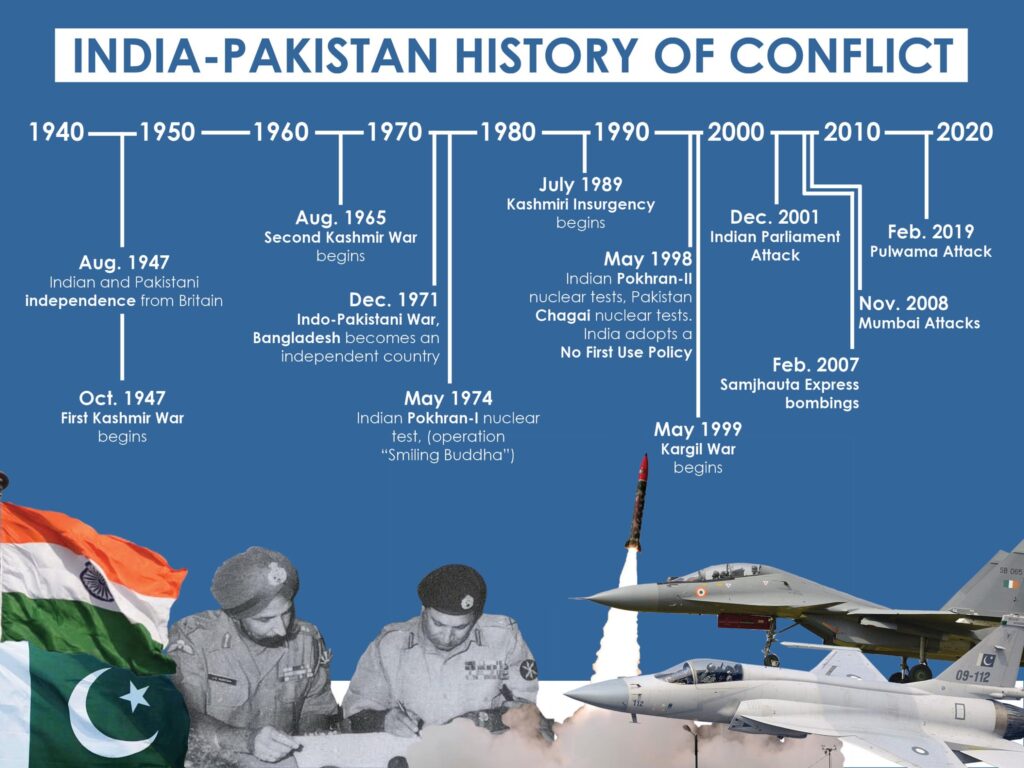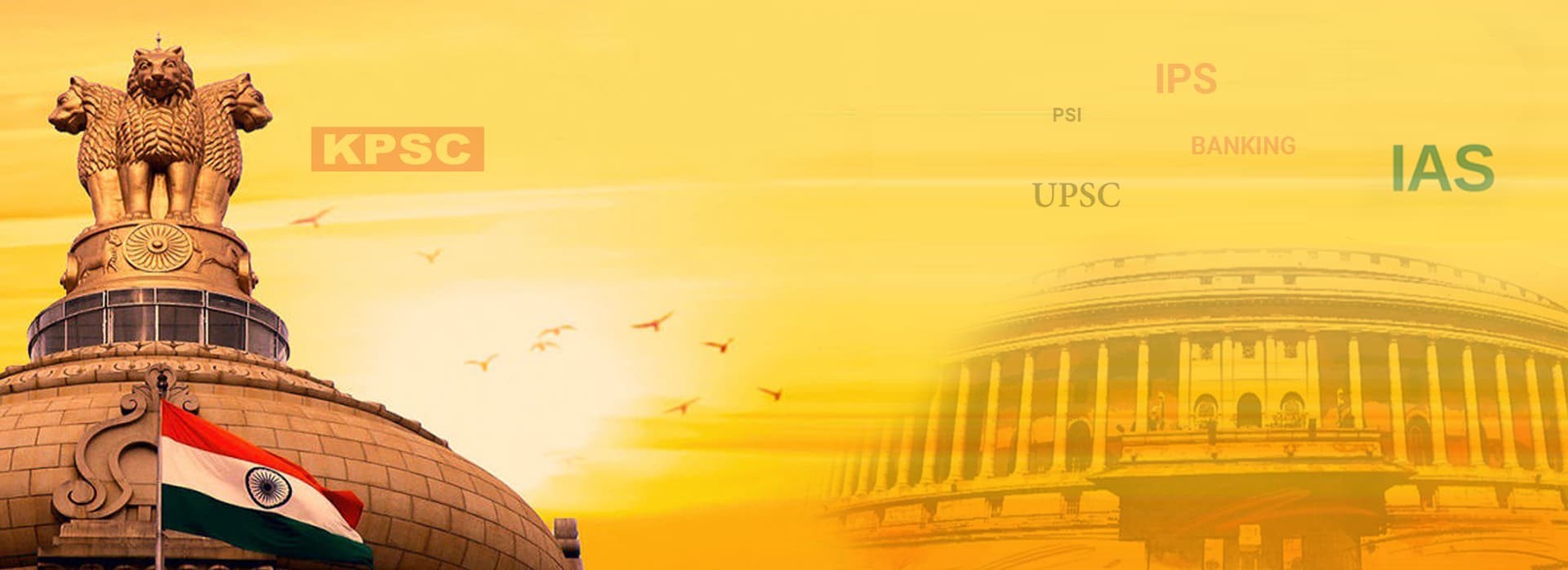THE HAZARDS OF GOING GLOBAL ON INDIA-PAKISTAN ISSUES
Relevance: GS 2 – Bilateral, regional and global groupings and agreements involving India and/or affecting India’s interests
Why in the News?
● Operation Sindoor has reignited national attention on cross-border terrorism and India’s counter-terror operations.
● The operation underscores the persistent challenge of terror being fostered from across India’s borders, particularly from Pakistan, including activities of groups such as Lashkar-e-Taiba (LeT) and Jaish-e-Mohammed (JeM).
● United Nations’ lack of a universal definition of terrorism, veto politics in UNSC, and selective listing of terrorists, continue to hinder India’s global efforts to isolate state sponsors of terrorism.

Frozen Diplomatic Landscape
● The situation is mired in a complex and outdated web of international narratives that are difficult to untangle.
● Post-World War II developments and the Cold War era have significantly shaped global attitudes toward the India-Pakistan debate.
● These historical influences limit the effectiveness of even the most sincere and logical peace initiatives.
● The futility of bilateral diplomacy with Pakistan is once again evident, as dialogue remains unproductive amid continued hostile actions.
● Multilateral mechanisms like SAARC and the UN often fail to yield effective outcomes due to geopolitical alignments and strategic interests of major powers.
● These developments collectively expose the limitations of both diplomatic channels and international institutions in addressing India’s core security concerns, particularly in combating terrorism in India.
Impact of UN and International Frameworks
● Existing UN literature and international doctrines act as roadblocks for fresh diplomatic efforts.
● Key issues such as Jammu & Kashmir, terrorism, self-determination, non-proliferation, and peaceful dispute resolution have been interlinked and confused over 70+ years.
● Pakistan leverages this ambiguity to maintain international focus on Kashmir as the “core issue.”
Operation Sindoor and Diplomatic Outreach
● Following Operation Sindoor, seven Indian envoy teams were dispatched globally to communicate India’s stance.
● The top message conveyed: “Jammu and Kashmir is an integral part of India.”
● Challenges in International Perception: Many countries, unfamiliar with regional nuances, refer to UN documents and maps for guidance.
● UN maps often include inscriptions such as: ○ “Dotted line represents approximately the Line of Control… Final status not yet agreed upon.” ○ Or general disclaimers like: “Boundaries and names do not imply UN endorsement.”
● As a result, foreign governments hesitate to take firm positions and often defer to bilateral resolutions, such as those proposed in the Shimla Agreement.
India’s Long-Standing Push for a Global Anti-Terror Framework
● Over 30 years ago, India proposed a Comprehensive Convention on International Terrorism (CCIT) at the UN General Assembly.
● The initiative was dismissed as an anti-Pakistan political move, failing to gain serious international traction.
● At the time, global institutions lacked interest; the UN’s counter-terrorism efforts were minimal, limited to a single research post in Vienna.
● The Problem of Defining Terrorism ○ The core obstacle was the lack of consensus on defining terrorism. ○ The dictum “one man’s terrorist is another man’s freedom fighter” weakened efforts to build a global understanding. ○ Critics cited India’s support to anti-colonial movements in Africa and Tamil fighters in Sri Lanka to argue against a fixed definition. ○ As a result, the UN intentionally left the definition vague, undermining legal and political progress.
● Post-9/11 Shift in Global Priorities ○ The 9/11 attacks in the U.S. marked a dramatic turning point, making terrorism a global priority, especially for the West. ○ Initially, it seemed the world would rally to establish a unified legal and political framework against terrorism. ○ However, the momentum shifted from international law-making to U.S.-led military intervention in Afghanistan.
● Unfinished War, Unresolved Definitions ○ The ouster of the Taliban was projected as a step toward eradicating global terrorism. ○ Decades later, the U.S. withdrew from Afghanistan, effectively returning power to the Taliban, the very group it had aimed to eliminate. ○ This sequence of events further highlighted the failure of international mechanisms to sustain a consistent, long-term counter-terrorism policy.
UN Security Council’s Counter-Terrorism Framework
● The UN Security Council (UNSC) has adopted several resolutions obligating member-states to take economic, legal, and security measures to prevent terrorist acts.
● The Counter-Terrorism Committee (CTC) monitors compliance and oversees the implementation of these measures by member states.
● Despite these frameworks, the lack of enforcement mechanisms and definitional clarity weakens global counter-terror efforts.
● Self-Defence Under Article 51: A Legal Grey Zone: Article 51 of the UN Charter allows nations to act in self-defence if an armed attack occurs. ○ While not originally framed for non-state actors, some interpretations extend this right to responding to terrorist attacks. ○ India’s position — especially regarding air strikes on terror infrastructure — is subject to scrutiny on: ■ Proportionality ■ Adherence to international humanitarian law ■ Cross-border implications
● UN Emphasis on a Holistic Approach: The UNSC stresses a “whole-of-society” approach that includes: Respect for human rights, Rule of law and Preventive strategies addressing root causes and extremism ○ This approach favors long-term capacity-building and cooperation over unilateral military action.
Constraints on India’s Strategy
● India’s efforts to frame cross-border terrorism as an act of war have not been clearly endorsed by the UN.
● The Counter-Terrorism Committee has not explicitly supported the “terrorism equals war” doctrine.
● India’s air strikes, though widely defended domestically, face diplomatic friction internationally.
● Ceasefire and Diplomatic Restraint: Double-Edged Sword ○ India’s continued commitment to the LoC ceasefire and its restraint during provocations often earn it international praise. ○ However, this restraint is also used by some countries to question the necessity or legitimacy of future military actions. ○ Special envoys representing India post-Operation Sindoor may have encountered pushback or ambiguity from even friendly nations on these issues.
Genesis of the Hyphenation: A Strategic Misstep at the UN
● In 1948, India approached the United Nations over Pakistan’s invasion of Kashmir, which was a clear case of aggression.
● However, the issue was taken up under Article VI (Pacific Settlement of Disputes) rather than Chapter VII (Action with respect to threats to peace).
● This misclassification diluted the gravity of Pakistan’s actions, allowing the matter to be treated as a bilateral dispute rather than an act of aggression.
● The Consequence: India-Pakistan Hyphenation ○ Over time, the international discourse hyphenated India and Pakistan, treating both as equal parties in a dispute rather than aggressor and victim. ○ This framing allowed the inclusion of extraneous and controversial issues in UN discussions—such as self-determination, plebiscite, and human rights violations. ○ The situation was further complicated when both countries became nuclear powers, branding Kashmir a nuclear flashpoint in global narratives.
● Contrasting Doctrines, Unequal Treatment ○ India’s “No First Use” nuclear policy reflects its responsible strategic posture. ○ In contrast, Pakistan threatens nuclear escalation and expands its conventional military rhetoric. ○ Despite this, Western powers often equate both nations, ignoring the asymmetry in doctrines and intent.
● India’s Firm Bilateral Policy ○ India maintains that Kashmir is non-negotiable. The only bilateral issues to be discussed are: Cross-border terrorism and The status of Pakistan-administered Kashmir (PoK). ○ Given Pakistan’s persistent efforts to internationalise Kashmir, India views multilateral diplomacy as ineffective.
● Lessons from the Special Envoys’ Diplomacy ○ Post-Operation Sindoor, India’s special envoys engaged global partners to present its case. ○ Their reports likely reinforce a long-standing reality: India gains little from internationalising its security concerns. ○ The UN framework, shaped over decades, is ill-equipped to support India’s narrative, entangled in outdated and politically compromised concepts.
● Strategic Autonomy and Self-Reliance in Security ○ Given the continued failure of diplomacy and ineffectiveness of international forums, India’s best course is self-reliant security policy. ○ Appropriate military action, aligned with international law and proportionality, remains the only viable option as long as Pakistan pursues its policy of “a thousand cuts.”
CONLUSION
In light of these challenges, India’s counter-terrorism strategy has evolved to include a more robust national security apparatus. The cabinet committee on security and the national security council of India play crucial roles in formulating responses to threats like the Pulwama attack and activities of terrorist groups such as Lashkar-e-Taiba (LeT) and Jaish-e-Mohammed (JeM). The government decision to abrogate Article 370 in Jammu and Kashmir was partly aimed at addressing underlying grievances and combating terrorism, though it has also raised concerns about human rights violations and the plight of Kashmiri Pandits.
India’s approach to counter-terrorism in India now emphasizes a zero-tolerance against terrorism policy, improved intelligence gathering to prevent intelligence failure, and strategic use of diplomatic tools like pushing for Pakistan’s inclusion in the FATF grey list. However, challenges remain, including the emergence of new threats like The Resistance Front (TRF) and the ongoing issue of radicalisation.
The CCS meeting following a terrorist attack in Kashmir often results in decisive action, demonstrating India’s commitment to national security. India’s UN representative frequently raises the issue of cross-border terrorism in various UN forums, including those conducted in UN official languages, to garner international support. The use of the Unlawful Activities (Prevention) Act (UAPA) has been instrumental in India’s legal framework against terrorism.
Efforts to build a national consensus on counter-terrorism strategies have included All-Party Delegations to affected regions. India has also explored leveraging the Indus Water Treaty as a diplomatic tool in its dealings with Pakistan. However, the threat of nuclear weapons and targeted killings by terrorist groups like Lashkar-e-Taiba (LeT) and Jaish-e-Mohammed (JeM) continue to pose significant challenges.
As India continues to navigate these complex issues, maintaining a delicate balance between military preparedness, diplomatic engagement, and addressing root causes of conflict remains crucial. The nation’s efforts in combating terrorism will likely continue to shape its foreign policy and domestic security strategies in the years to come, particularly in relation to the India-Pakistan border and India-administered Kashmir. The actions of the Pakistan cabinet in response to India’s counter-terrorism measures often further complicate the bilateral relationship, especially when it comes to groups like Lashkar-e-Taiba (LeT) and Jaish-e-Mohammed (JeM).
Source: https://www.thehindu.com/opinion/lead/the-hazards-of-going-global-on-india-pakistan-issues/article69679782.ece
Mains Question (250 words):
Discuss how the evolution of the India-Pakistan conflict has influenced India’s counter-terrorism strategy and diplomatic options in addressing cross-border terrorism.








